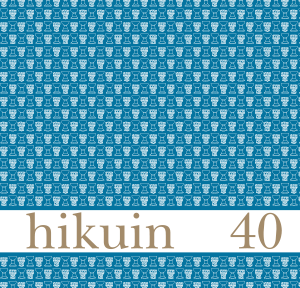I hopp om det eviga livet. Dopfunten som performativt objekt
Abstract
In the Hope of Eternal Life.
The Baptismal Font as Performative Object
By Lars Berggren
Seeing and perceiving are complicated processes that we only during the last decades are beginning to understand. All images seem to be performative in the sense that they do something with and to us whether we like it, or are at all aware of it, or not. Therefore, it’s necessary to consider a number of religious objects and practices in a wider functional context. In this paper, it is argued that a Medieval baptismal font, due to the special status of Baptism, its iconography and positioning in the church, not only functioned in performative dialogue with the ritual of baptism, the various stages of Mass, and the building itself, but also served a number of important secular purposes: legal, social and political.
References
Als Hansen, Birgit: ”Ishøj kirke - et kirkerum fra 1100-årene og op gennem middelalderen”, Nationalmuseets Arbejdsmark 1975, s. 118-28.
Als Hansen, Birgit: ”Arkæologiske spor efter døbefontens placering i kirkerummet gennem middelalderen”, Hikuin 22, 1995, s. 27-40.
Berggren, Lars: ”De gotländska dopfuntarna i den medeltida östersjöhandeln. Lyxartiklar eller barlast?”, Songs of Ossian. Festschrift in Honour of professor Bo Ossian Lindberg, Konsthistoriska studier 27, red. Åsa Ringbom & Renja Suominen-Kokkonen, Helsingfors 2003, 59-73.
Berggren, Lars: ”The Export of Limestone and Limestone Fonts from Gotland during the 13th and 14th Centuries”, Cogs, Cargoes and Commerce – Maritime Bulk Trade in Northern Europe 1150-1400, red. Lars Berggren, Nils Hybel & Annette Landen. Papers in Mediaeval Studies 15, The Pontificial Institute for Medieval Studies, Toronto 2002, 143-180.
Bond, Francis: Fonts and Font Covers, London 1985 [Oxford 1908].
Brandt, Olof: Korset och kapitälet. De fornkristna kyrkorna och monumentaliteten, Skellefteå 2017.
Bredekamp, Horst: Theorie des Bildakts. Frankfurter Adorno-Vorlesungen 2007, Berlin 2010.
Cirsone, Giacomo: I battisteri paleocristiani di Roma: analisi architettonica e topografica, Rom 2013.
Danmarks Kirker, København 1933–.
Douglas, Mark: The Archaeology of Memory: an Investigation into the Links between Collective Memory and the Architecture of the Parish Church in late Medieval Yorkshire, Diss. Univ. of Durham 2003.
Easton, Burton Scott: The Apostolic Tradition of Hippolytus; Translated [...] with Introduction and Notes, Cambridge 1934.
Eriksson, Torkel: ”Kungen är död, leve helgonkonungen! Till tolkningen av en romansk bildfris”, ICO. Iconographisk Post 2015:1, s. 3-32.
Eisenhofen, Ludwig: Handbuch der katholischen Liturgik, bd. 1: Allgemeine Liturgik, Freiburg in Br. 1932.
Hobsbawm, Eric & Terence Ranger (red.): The Invention of Tradition, Cambridge 1983.
Kaspersen, Søren: ”Narrative ’Modes’ in the Danish Golden Frontals”, Decorating the Lord’s Table, red. Søren Kaspersen & Erik Thunø, Köpenhamn 2006, s. 79-127. Lexikon der christlichen Ikonographie, bd. 2, Freiburg 1970.
Landen, Annette: ”Gotländsk stenexport”, Medeltid, red. ErikOsvalds, Lund 1997, s. 81–93.
Ljungman, Ulrika: ”När ord blev sten. Delstudie av romanska dopfuntars ikonografi”, ICO. Iconographisk Post 1993:1, s. 1-20.
Nilsson, Ing-Marie: ”Härskarsymbol och högsäte – om betydelsen av västmarkeringar i romanska kyrkor”, META – Medeltidsarkeologisk tidskrift, 2003:1, s. 31-47.
Reutersvärd, Oscar: Paradisets källa och de gotländska ”Paradisfuntarna”, Lund 1967.
Ringbom, Lars-Ivar: Paradisus terrestris, Helsingfors 1958.
Roosval, Johnny: Die Steinmeister Gottlands, Stockholm 1918.
Rowland, Beryl: ”The Art of Memory and the Bestiary”, Beast and Birds of the Middle Ages: The Bestiary and its Legacy, red. Willene B. Clark & Meradith T. McMunn, Philadelphia 1989, s. 12-25.
Wimmer, Ludv. F. A.: Døbefonten i Åkirkeby kirke, København 1887.
Downloads
Published
How to Cite
Issue
Section
License
Forfatter og Forlag.





